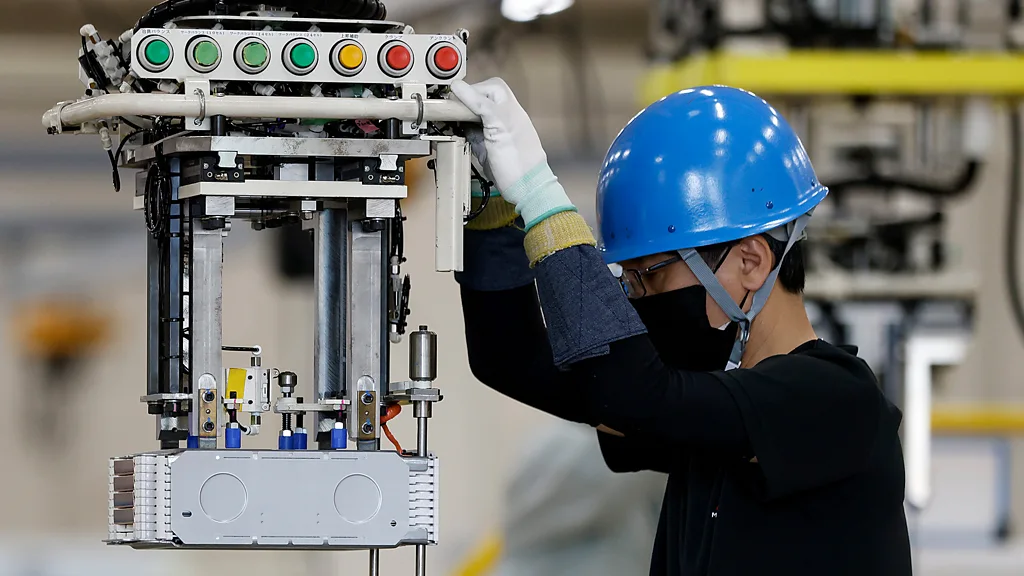
Lithium batteries are very difficult to recycle and require huge amounts of water and energy to produce. Emerging alternatives could be cheaper and greener.
In Australia’s Yarra Valley, new battery technology is helping power the country’s residential buildings and commercial ventures – without using lithium. These batteries rely on sodium – an element found in table salt – and they could be another step in the quest for a truly sustainable battery.
The global demand for batteries is surging as the world looks to rapidly electrify vehicles and store renewable energy. Lithium ion batteries, which are typically used in EVs, are difficult to recycle and require huge amounts of energy and water to extract. Companies are frantically looking for more sustainable alternatives that can help power the world’s transition to green energy.
“Sodium is a much more sustainable source for batteries [than lithium],” says James Quinn, chief executive of Faradion, the UK-based battery technology company that manufactures the sodium-ion batteries for Yarra Valley utility company Nation Energie. “It’s widely available around the world, meaning it’s cheaper to source, and less water intensive to extract,” says Quinn. “It takes 682 times more water to extract one tonne of lithium versus one tonne of sodium. That is a significant amount.”
Faradion’s sodium-ion batteries are already being used by energy companies around the world to store renewable electricity. And they are just one alternative to our heavy and growing reliance on lithium, which was listed by the European Union as a “critical raw material” in 2020. The market size for the lithium battery is predicted to grow from $57bn (£45bn) in 2023, to $187bn (£150bn) by 2032.
To find promising alternatives to lithium batteries, it helps to consider what has made the lithium battery so popular in the first place. Some of the factors that make a good battery are lifespan, power, energy density, safety and affordability.
The downsides are also plentiful: at the end of their lifespan, recycling these batteries is still a complicated process. Extracting individual metals in the battery for recycling involves shedding the metal, then separating them in liquid to extract the desired metal.
“Recycling a lithium-ion battery consumes more energy and resources than producing a new battery, explaining why only a small amount of lithium-ion batteries are recycled,” says Aqsa Nazir, a postdoctoral research scholar at Florida International University’s battery research laboratory.
Lithium extraction using evaporation ponds, as is done in countries such as Chile, comes with a high water footprint. Studies show that contaminants may be released into the environment during the evaporation process, potentially affecting nearby communities. Water scarcity caused by mining could also threaten the livelihoods of indigenous communities. The overlap of mining sites with indigenous living areas has also led to forced migration and the abandonment of ancestral villages.
An alternative to the evaporation method is hard rock mining, such as is done in Australia. But this has its own drawbacks. For every tonne of lithium mined during hard rock mining, approximately 15 tonnes of CO2 is emitted into the atmosphere.
So, are there viable alternatives to the lithium-ion battery?
Sodium-ion batteries
In sodium-ion batteries, sodium directly replaces lithium. Not unlike lithium-ion batteries, sodium batteries contain four main components – the anode, the cathode, an electrolyte and a separator. The state of the electrolyte varies depending on the manufacturer.
The sodium to lithium ratio in the earth’s crust is 23,600 parts per million (ppm) to 20 ppm. The natural abundance of sodium leads to a much lower cost of extraction. Another factor for the sodium battery is that it can make use of other lower cost materials, replacing copper foils with aluminum foils, for instance.
Maria Forsyth, chair of electromaterials and corrosion sciences at Deakin University, Australia, says that switching from lithium to sodium battery production would be fairly low cost.
“Manufacturing wise, the transition is easy because the same factories, which currently produce lithium-ion batteries, can manufacture sodium batteries,” says Forsyth. “This means production can be scaled quickly.
One benefit of sodium batteries is their safety in transit. “A unique feature of sodium ion technology is the ability to discharge sodium to zero volts for storage and transportation,” says Quinn, Faradion’s chief executive. “This means it can be stored and transported in safer conditions.” The lower flammability risk levels make it a safer option compared to lithium batteries, Quinn says.
